The limits of the territory
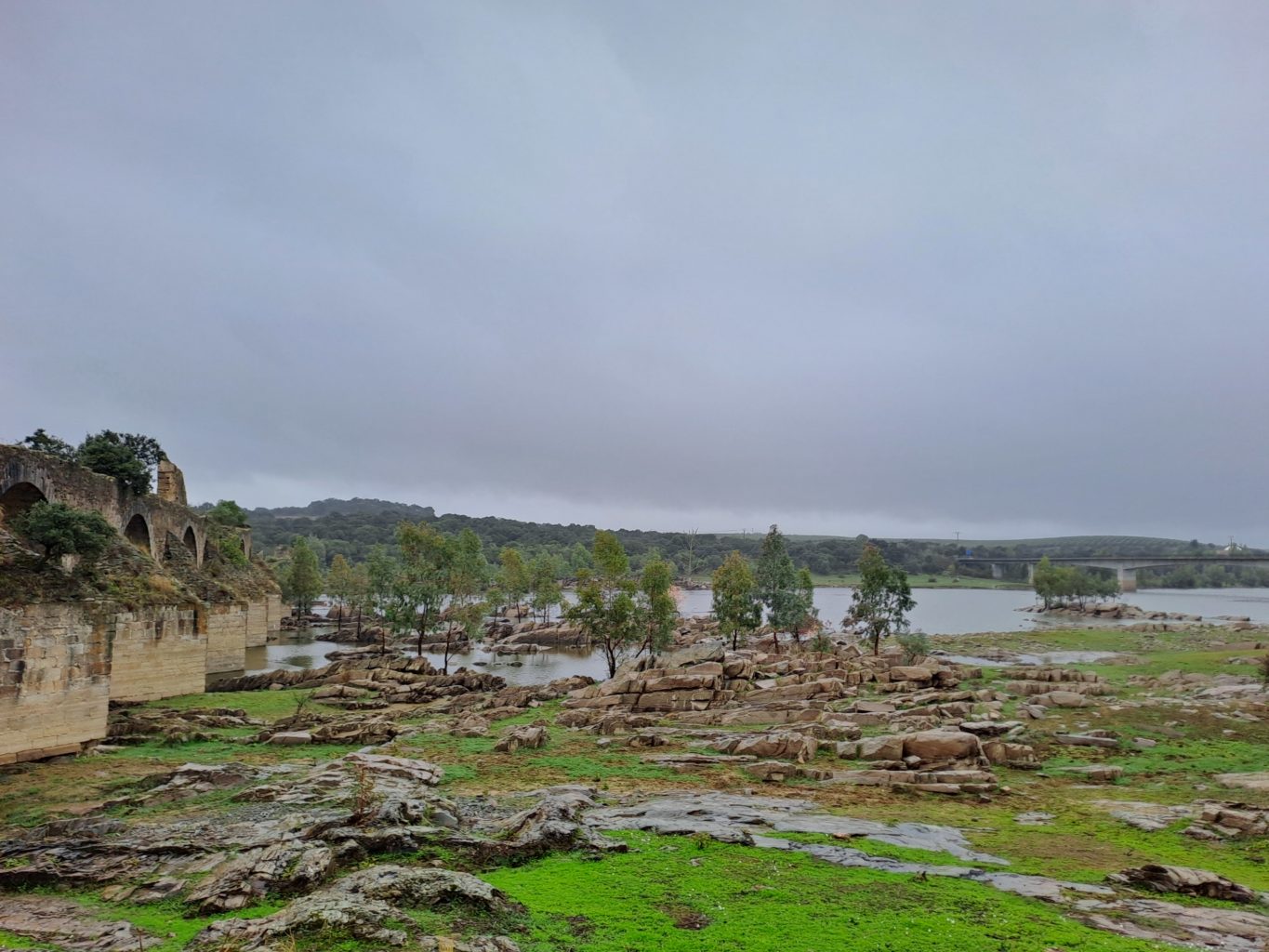
First meeting between Francesc Ruiz and the group of commissioners
The Ajuda bridge crossed the Guadiana to connect Olivenza and Elvas until, in 1709, Spanish troops detonated it, blocking the river crossing and isolating Olivenza from the rest of Portuguese territory, a strategy that ended with the capture of the city almost a century later under the command of Manuel Godoy. Since then, the city has belonged to Spain under a peculiar arrangement that allows Oliventines to claim Portuguese nationality (and be considered residents abroad). A new bridge was built in 2000, just 200 metres further south. The functional concrete aesthetic connects Spain and Portugal by road, this time in the context of the European mobility of the Schengen area, and from it one can see the ruins of the first bridge, a reminder of the fragility of agreements and borders.
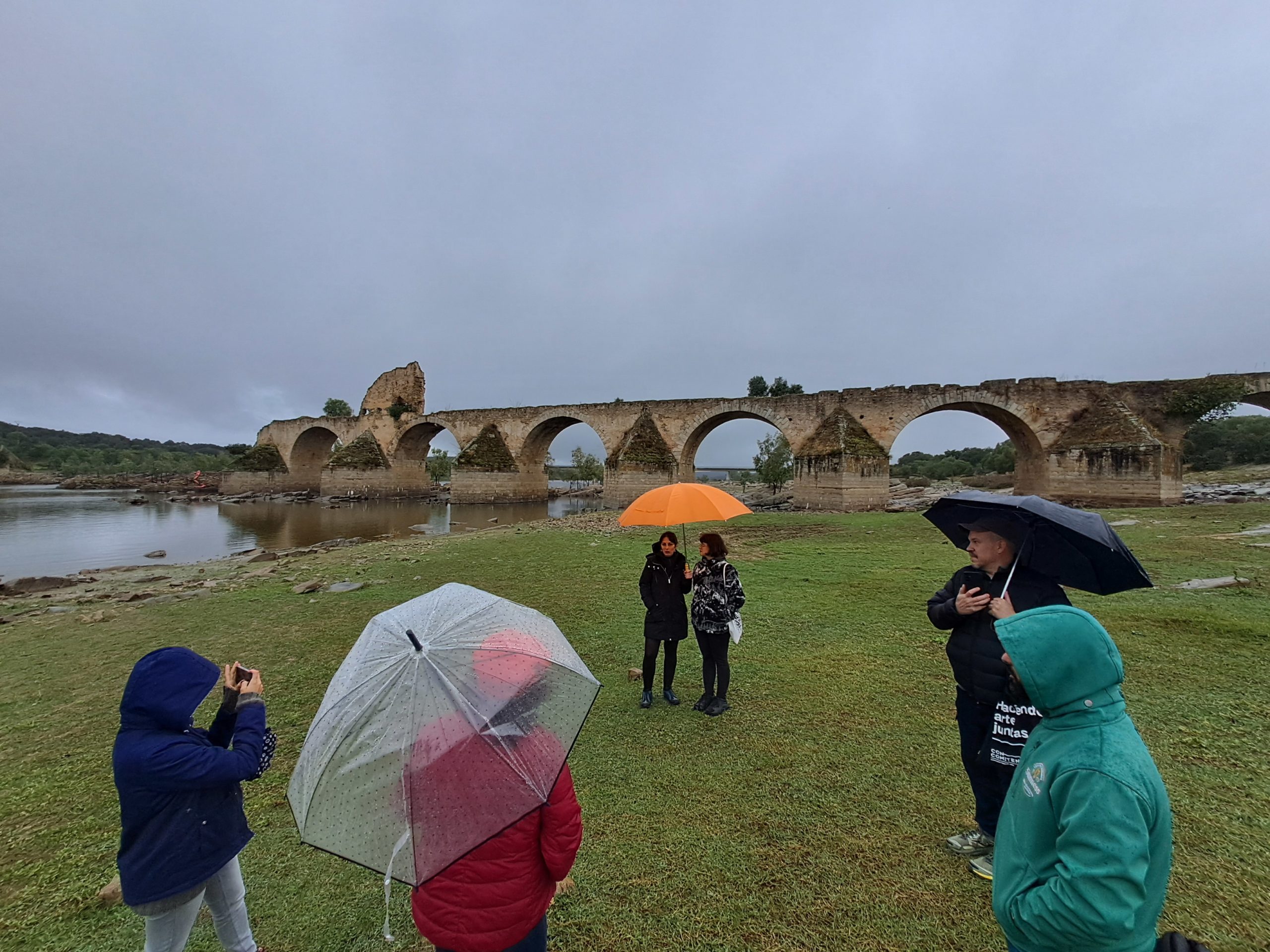
In the first in-person meeting between the group of commissioners and Francesc Ruiz, the artist selected to materialise the Non plus ultra commission, we travelled along the Guadiana, from south to north along a short stretch between Olivenza and Badajoz. We began by taking shelter from the rain under one of the arches of the Ajuda Bridge that are still standing and talked about borders and mobility across them. The old and new Ajuda Bridge speak of national agreements and interests, of budgets with the capacity to transform the landscape, but what interested us most about these banks was the memory of smuggling. Obviously, the group of commissioners has not lived through the experience of the "estraperlo", nor the hunger during Franco's regime or the beginning of the transition. We were born after Spain's entry into the European Union, but the memory of those experiences is still very present, it has been passed down through the generations and there, in the cold of a winter rain, we talked about the experiences of smugglers crossing the waters of the Guadiana with the vividness of having heard them from the mouths of those who lived through them.
Olivenza has been the furthest point we have touched throughout the Non plus ultra process, centred mainly in the south of Badajoz, between the provinces of Zafra-Río Bodión, Campiña Sur and Tierra de Barros. It is a large territory, the group of comitants lives in points up to one hour away from each other. The process of collective identification is not based on a place or a fixed label, but on the response to territorial management processes. The "non" in the title poses a constitutive opposition to extractivist dynamics, so we began the project by investigating the origins of the policies that are shaping the south of Badajoz in a context of digital transition and climate crisis, in order to understand what united the group. Now, as we begin to design the commission with Francesc Ruiz, the challenge has shifted towards transforming this initial opposition into a generative movement of new narratives.
Leaving Olivenza behind, we drive up the Portuguese side to Badajoz, cross intensive nut farms (which calls into question the use of the term rural when what surrounds you are thousands of hectares of industrialised crops), enter Spanish territory on the dual carriageway and head towards Campo Maior. Before crossing the border again, we stop at an industrial estate under construction, the Southwest European Logistics Platform. Very wide, perfectly asphalted roads, ready to receive tons of trucks, almost every block waiting to be built, only one frozen food company standing there and, in the background, immense, a new Amazon logistics centre. We parked in the middle of the empty car park. The centre is finished, with newly planted saplings in the surrounding garden area and the opaque glass of the shiny façade, but it is not in operation, the only movement we saw was that of the guard who came out to ask what we were doing there, after 15 minutes with his face pressed against the glass trying to see inside.
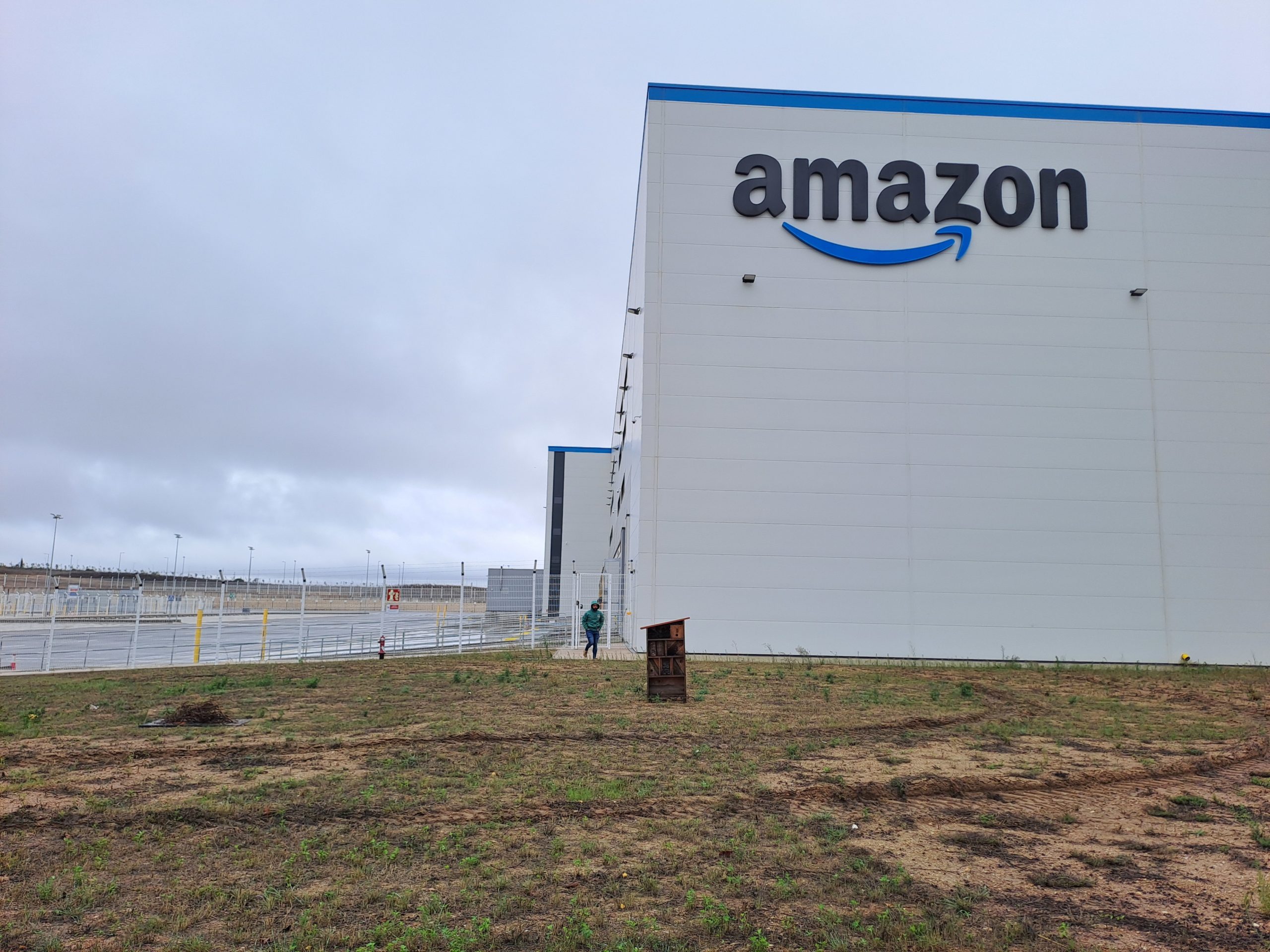
In this huge facility, it is the small details that disturbed us the most: the pattern of smiles/arrows/phalos of the Amazon logo, repeated on the fences, also on the signs indicating the exit to the car park; the wooden insect houses in various landscaped spots, dry and still without plants to pollinate; the little corner of picnic tables to go out to eat, with ashtrays for the scheduled minutes to rest and smoke... Everything resonated with the notion of "disturbing distribution" that Francesc has worked deeply on, attending to and intervening in processes of distribution of merchandise. The genealogy that is formed between the memory of the "estraperlo" and the horizons drawn by mega-companies such as Amazon situates the challenge of Non plus ultra in a complex territory outside the most common points of depopulation. Here there is an excess of infrastructures for the mobility of goods over any other way of life.
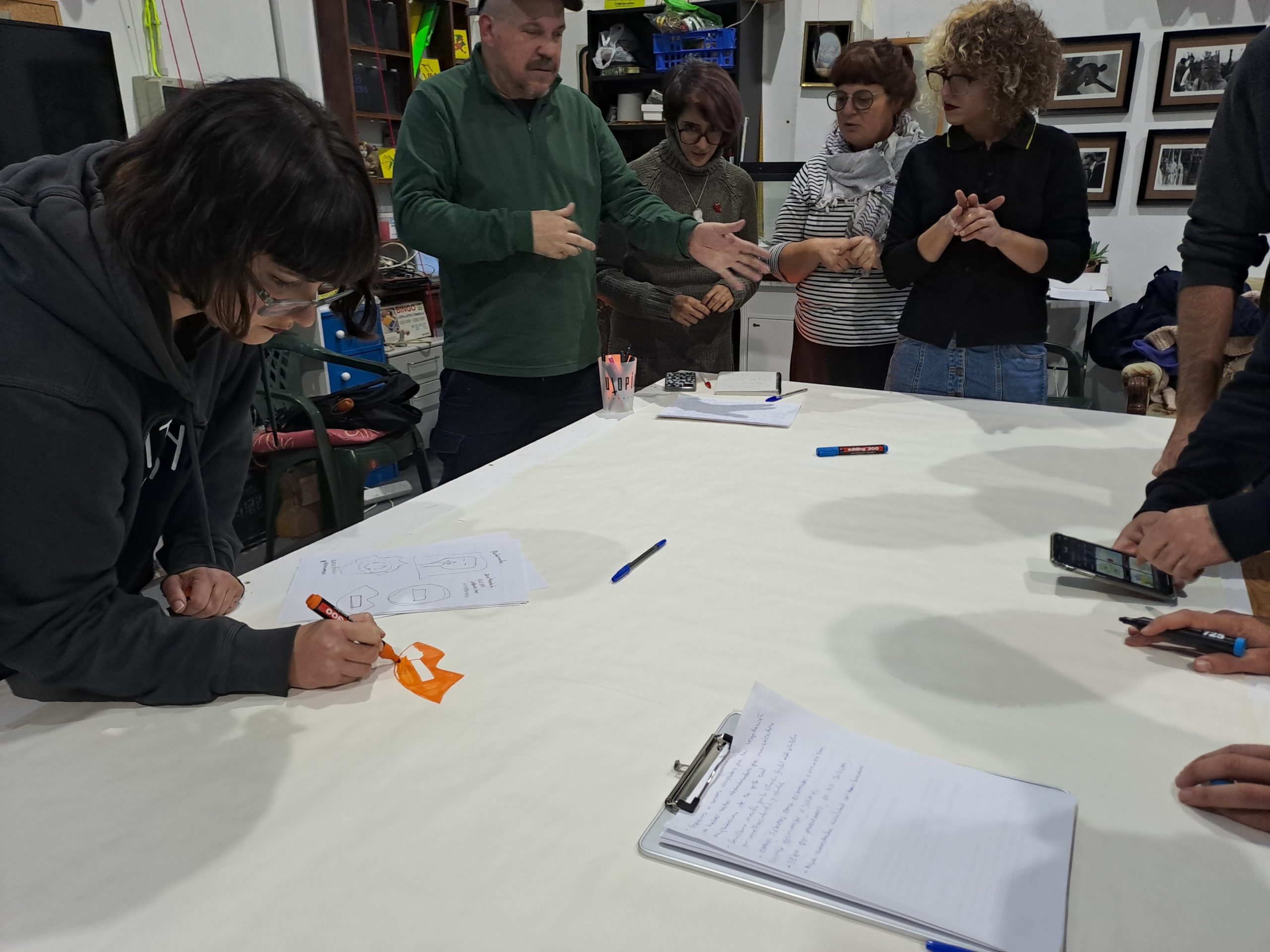
The day ended in the space of UHT, a collective that collaborates with Non plus ultra, in the old Asland cement factory in Los Santos de Maimona, managed by the Maimona Foundation. Now without cold or rain and open to anyone interested, Francesc made a presentation of his work and proposed an "urgent counter-mapping workshop" to identify elements of the territory to work on, with which to develop an alternative counter-geography to the processes of resource extraction that impose a map of roads, quarries, logistical centres and canals. Just before starting, there was a knock on the door from the regional RTVE news. "We called you a while ago, we couldn't find where the workshop was". Indeed, the only indications we had shared were "Antigua cementera. C/ Paraje la Nava s/n", not easy to find if you don't know the place, although any attentive look would have found the signs to get there (and they did).
Each session of Non plus ultra defines its objective more precisely: to multiply the ways of inhabiting a territory in order to resist monoculture. The ruins of the Ajuda Bridge, the car park of the Amazon logistics centre, the abandoned cement factory of the prehistoric Plan Badajoz... occupying and inhabiting them avoids entering into the logic that the territory is exhausted.
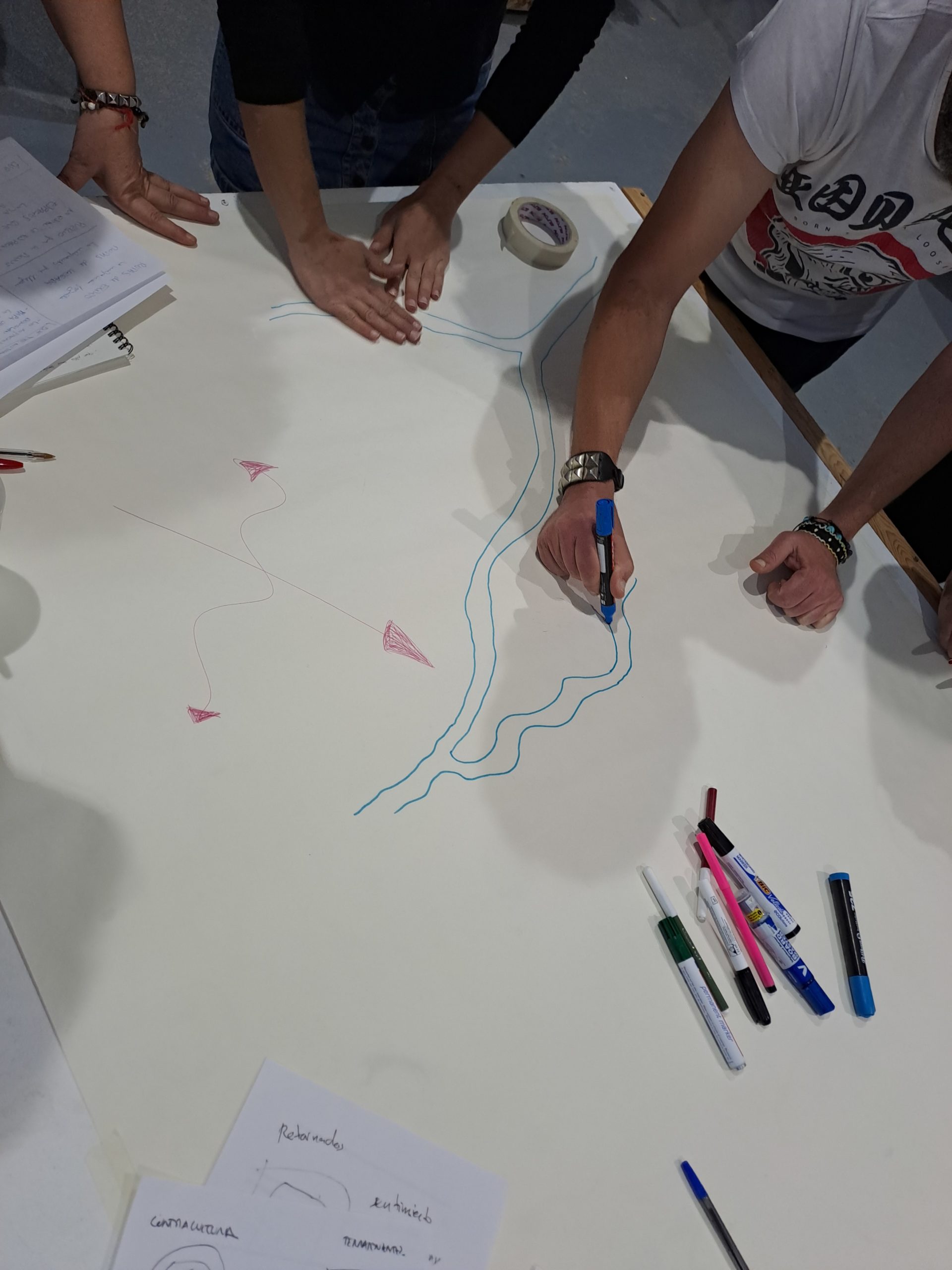









 Concomitentes
Concomitentes